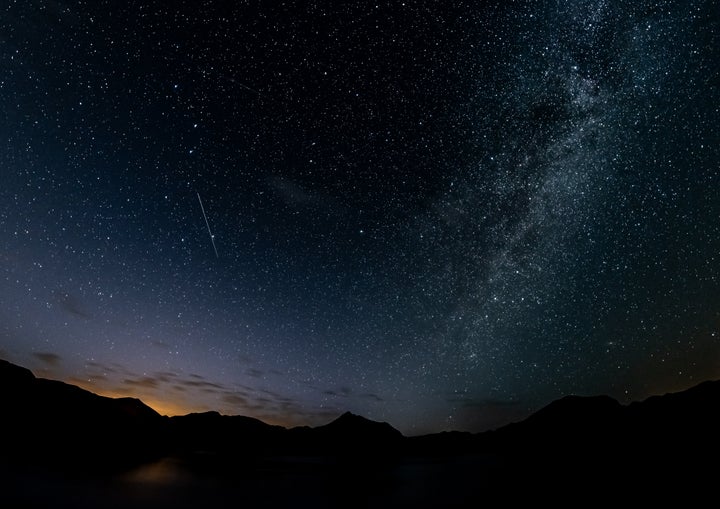
Calling all stargazers: this weekend is set to be a big one.
The Perseid meteor shower is set to peak on Saturday, August 12, and Sunday, August 13 – and you don’t even need binoculars or a telescope.
And, according to EarthSky, the waning crescent moon is going to be just 10% illuminated this weekend – meaning it’ll be much easier to see the stars across the night sky.
You might even be able to see more than 50 meteors per hour move across the sky, if the conditions are right where you are.
What are the Perseids?
Named after the nearby constellation of Perseus (which astronomers call the meteor shower’s “radiant”), this celestial event is arguably the best meteor shower of the year.
If you like a bit of mythology, you might already know Perseus was a hero who beheaded the Gorgon Medusa in Greek legend.
Perseids is a word which comes from the word for his descendants, Perseides.
However, the things you’re hoping to see in the sky this weekend aren’t actually his descendants – the meteors are fragments of a comet called Swift-Tuttle.
According to Royal Museum Greenwich, when comets get closer to the Sun, they heat up and break up.
This debris then falls into Earth’s path and can reach our atmosphere at speeds between 7 and 45 miles per second. The actual speed depends on the speed of the Earth and debris itself – the average speed for a Perseid is 36 miles per second.
Swift-Tuttle orbits the Sun once every 133 years, leaving behind a debris field which the Earth interacts with once a year.
The entire event occurs some time between July 14 and September 1 every year, peaking around mid-August.
This year, it started July 17, and the number of meteors shooting across our skies has gradually increased every night since, peaking this weekend before trailing off until stopping completely on August 24 – so don’t miss your chance.
The Perseid meteor shower is known to put on a particularly good show, with a high hourly rate of bright and visible meteors.
There’s also a high chance of seeing fireballs, as well as meteors with long trains!

How do I see the Perseids?
The best time is when the sky is at darkest, and the target at its highest point in the sky.
For those in the Northern Hemisphere, that’s normally between midnight and the early hours of the morning (5.30am) for meteors.
This year is also expected to be a particularly good one as it will be three days before the New Moon.
As Dr Shannon Schmoll, director of the Abrams Planetarium at Michigan State University, told CNN that “any moonlight we do get will be less and not drown out the fainter stars”.
So, to maximise your chance to see the big event, head to an area with little light pollution, ideally without much cloud coverage, where you can see the horizon clearly, away from trees and buildings.
With less light around, you’ll be able to see the illuminations from the meteor.
But we know it’s not always possible to escape light pollution.
As Royal Museums Greenwich recommends, going to a darker area “could mean heading out to the countryside, a nearby park or even do something as simple as turning your back to street lamps if you are not able to go anywhere.”
The website advised: “Give your eyes at least 15 minutes to adjust to the dark so that you can catch more of the fainter meteors – this does mean that you should not look at your phone!”
The organisation advised you not to use binoculars or telescope either, because they will restrict your view of the night sky and you could miss an amazing meteor.
Then, when you’re all set up, sit back, relax and enjoy the show!